How to Uncover Buying Motives to Deliver Tailored Solutions
Casey O'Connor
Buying motives are critical for salespeople to understand. They represent “the why” behind why prospects behave the way they do throughout the buying process.
The better sales reps understand “the why,” the more effectively they can design their sales approach to speak directly to the unique needs of each individual buyer.
In this article, we’ll go over everything you need to know about buying motives, including the 12 most common ones, how to identify them within the sales process, and how to leverage them to close more deals.
Here’s what we’ll cover:
- What Is Buyer Motivation?
- Why It’s Important to Understand Buying Motives in Sales
- 12 Common Buying Motives Explained
- How to Identify Your Prospects’ Buying Motives
- How to Leverage These Buying Motives in Your Sales Efforts
What Is Buyer Motivation?
Buyer motivation refers to the psychological factors that contribute to your buyer’s decisions and their approach to the buyer’s journey. 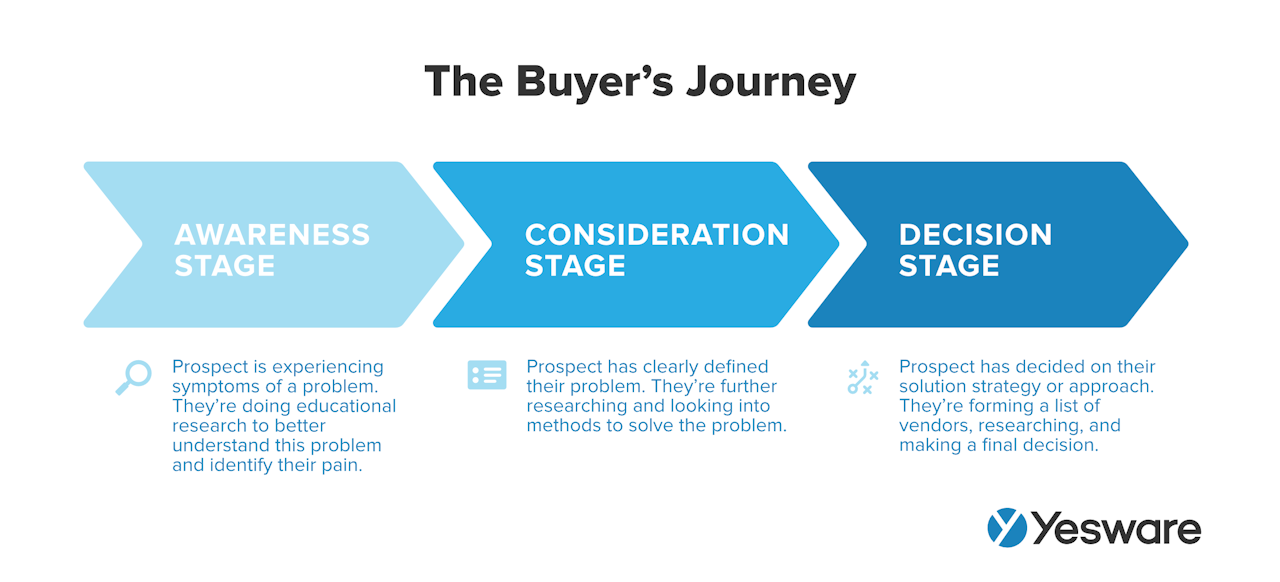 Buying motives can be based on facts, thoughts, emotions, or intuition. Different buyers prioritize each of these types of motives differently.
Buying motives can be based on facts, thoughts, emotions, or intuition. Different buyers prioritize each of these types of motives differently.
In general, buying motives fall under two general categories: product-based or patronage-based.
Product-based buyer motivation is driven by the specific features found within the offer. Factors like design, size, packaging, quality, price, color, and technological capability are prioritized by buyers who are product-motivated.
Patronage-based motivation, on the other hand, is born out of a desire to purchase from a particular vendor or seller. Most customers prefer to make purchases from people they trust; rapport and credibility are extremely important for patronage-motivated buyers.
Each of those two buyer motivation categories can also be further categorized into rational and emotional buying motives.
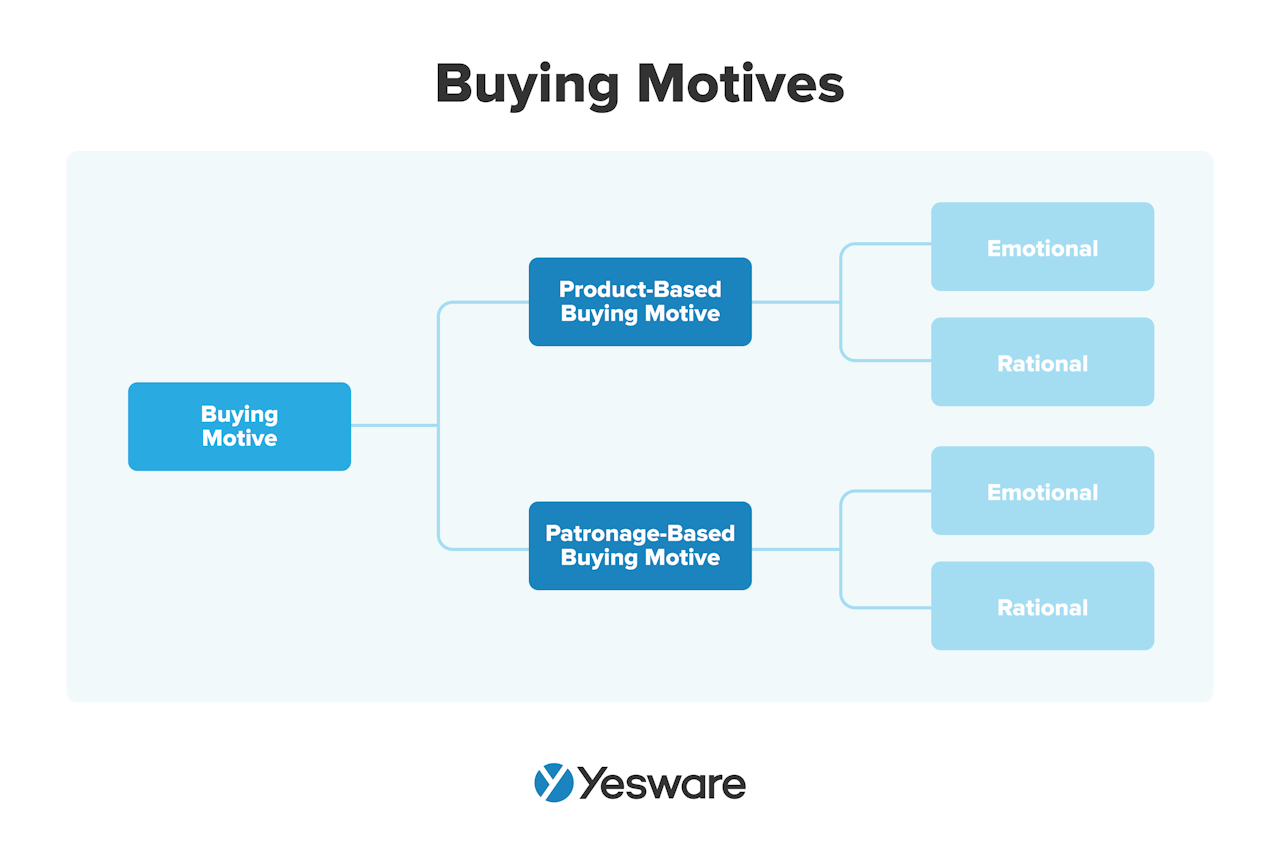 Rational buying motives are based on factual aspects like price, data-based case studies and testimonials, research, and so on.
Rational buying motives are based on factual aspects like price, data-based case studies and testimonials, research, and so on.
Emotional buying motives are based on feelings, especially poignant ones like health and well-being, power, security, love, anxiety, or desire to be liked or praised.
There are many specific buying motives represented within those four overarching categories. We’ll go over the 12 most common ones later on in this article.
Why It’s Important to Understand Buying Motives in Sales
Understanding buying motives helps sales professionals tailor the sales funnel to match the buyer’s journey. This increases the likelihood of closing deals and signing new customers.
A deep understanding of buyer motivation will help sales reps position the product and its features in such a way that the offer is seemingly tailored to the target buyer.
It’s important to note that most consumers have more than one buying motive. Salespeople should make efforts to understand the full range of possible buying motives that they may encounter with their target buyer.
12 Common Buying Motives Explained
Most buyers will be influenced by one or more of the following common buying motives.
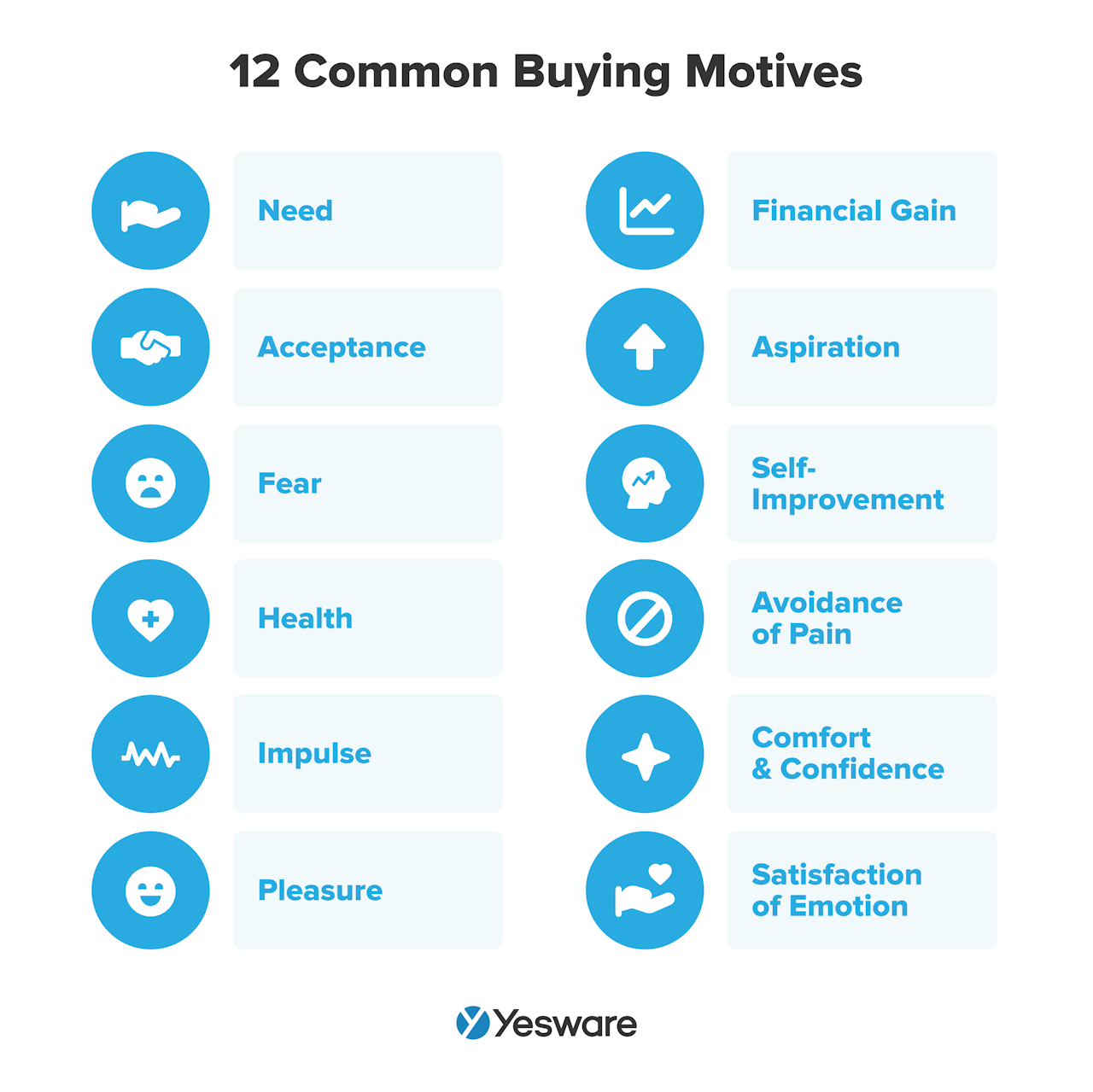 1. Need
1. Need
Need is a strong motivator, and can sometimes be the most immediate buyer motive apparent to the seller.
Some buyers are aware that they have a problem and have a desperate need to solve it; assuming this problem can be solved by your product, these buyers don’t often require a lot of persuading.
Some customers, though, don’t know right away that they have a problem or even a need. But skilled salespeople can inspire buyers to realize that they do, in fact, have a need for your product — even if they didn’t realize it a week prior.
For buyers motivated by need, positioning yourself as an expert can help you convince them to pull the trigger.
2. Acceptance
Many buyers are easily influenced by FOMO (fear of missing out). This buying motive is often responsible for purchases based on trends or fads.
Prospects motivated by acceptance make a purchase because their peers are making purchases. They often make decisions impulsively and, without a flawless customer experience, may not necessarily become long-term or loyal customers.
3. Fear
Although fear is considered a negative emotion, it can be highly motivating for buyers. That’s why many advertisers include undertones of fear in their marketing campaigns. Fear creates urgency and desperation.
Fear can come from many places. Buyers may be motivated by fear of revenue loss or loss of time. They may fear a lack of security. They may fear receiving blame for lack of efficiency.
When navigated correctly, sellers can leverage a prospect’s fear to position themselves as the safest choice with the most complete risk mitigation.
Fear is a buyer’s motivation that’s often present with other motivating factors.
4. Health
Even for buying decisions that aren’t explicitly health-based, well-being can often become a motivating factor.
If you can create the impression that your product will improve a buyer’s physical or mental well-being — even if it’s by simply touting how much time a buyer will save — buyers will be more likely to buy from you.
If you’re planning to appeal to a health-motivated buyer, it’s important that your claims are factual and legitimate. Offer proof for any features or benefits that you advertise.
5. Impulse
Impulse is another buyer motivation that’s often coupled with other factors, especially acceptance.
It’s a heat-of-the-moment motivator and can also be created by FOMO. Impluse is created in situations where there’s a lot of excitement or urgency. Promotions and discounts can also create impulse motivation.
6. Pleasure
Sellers in luxury markets may encounter pleasure as a buying motive.
Buyers motivated by pleasure are often making purchases based on wants, not needs.
Pleasure also sometimes comes into play during cross-sells and upsells; enhancing the offer can appeal to the buyer’s desire for more and/or better. 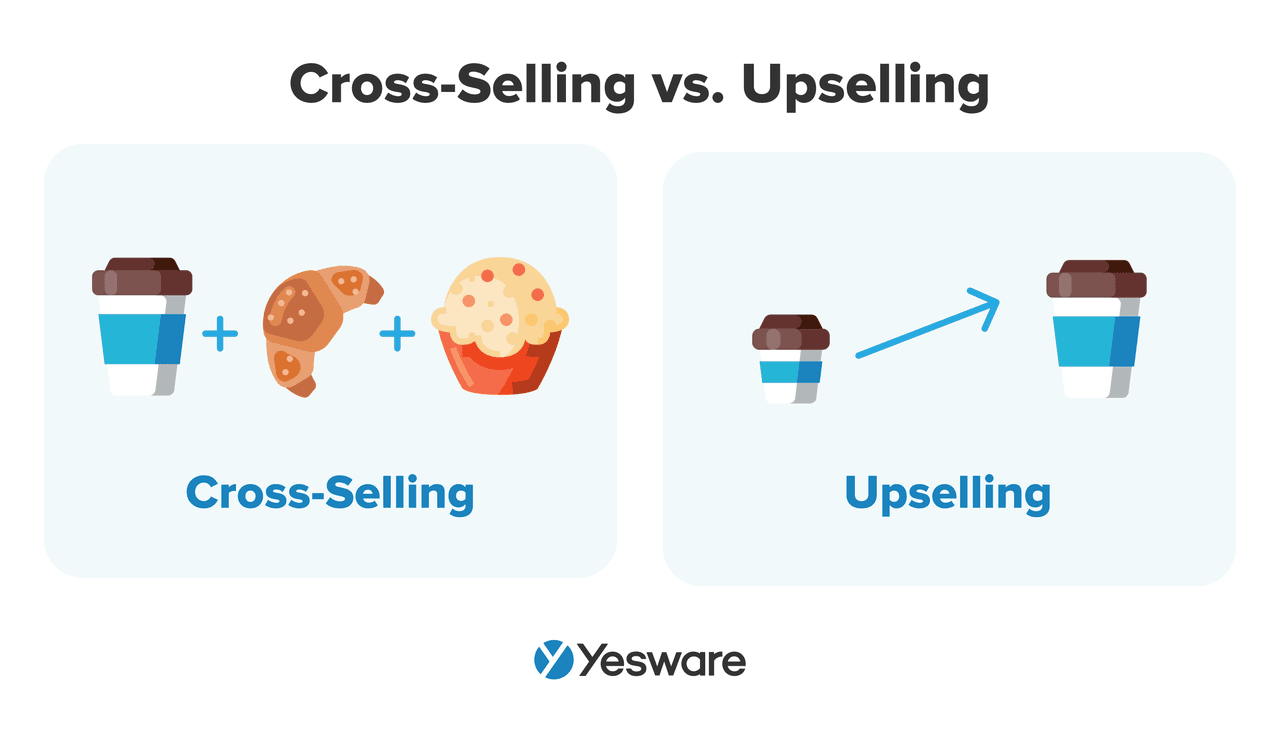 Even if pleasure isn’t a buyer’s primary motivator, it can still be worth pursuing these avenues if the buyer gives you an opening.
Even if pleasure isn’t a buyer’s primary motivator, it can still be worth pursuing these avenues if the buyer gives you an opening.
Appealing to pleasure can also tip the scales in your favor with a buyer who’s otherwise on the fence about whether to buy.
7. Financial Gain
Almost all B2B buying decisions are motivated, at least in part, by financial gain.
B2B purchases are based on the idea that buyers will spend money to make money. This is the basic principle of return on investment. Buyers motivated by financial gain want to leverage your offer to make more money for their own businesses.
This can be achieved in any number of ways and will be specific to your offer and target buyer. For example, financial gain can be achieved by increasing productivity, generating more revenue, or slashing extra costs.
In order to appeal to a financial gain motive, buyers need to see hard data that backs up your claims. You need to convince the buyer that they are in good hands with your product. These buyers have a lot at stake and are also often motivated by need and by fear. With so much on the line, financially-motivated buyers may require an appeal to multiple motivators.
8. Aspiration
Buyers who are motivated by aspiration yearn for growth. They often have lofty career goals and a strong desire to be respected and admired professionally.
These buyers are motivated by pride and prestige, and can be swayed by sellers who sell the dream of what life will look like after purchasing their product.
Show them what’s on the other side of purchase: a better life with more freedom to chase bigger and better goals.
9. Self-Improvement
Some buyers are motivated by a yearning for self-improvement.
These people are interested in personal and/or professional progress. They’re hoping for social acceptance and are constantly searching for ways to advance beyond their current state. They want access to the best resources and most efficient ways to improve their status.
10. Avoidance of Pain
Many buyers are motivated by avoidance of pain — and it’s probably not the kind of pain you’re thinking of.
Buyers’ pain can come from all kinds of issues — lack of time, too much stress, and management that’s too controlling are all real-world examples of buyer pain.
Some buyers are motivated to purchase in order to avoid this specific pain. Your job is to illustrate how incredible their world will feel after they eliminate that pain.
11. Comfort and Convenience
Sellers who work with buyers motivated by comfort and convenience should prioritize attentiveness and responsiveness. The buying process should be seamless, and sales reps need to learn how to anticipate the buyer’s needs before they even realize they have one.
Target markets motivated by convenience also need to have an exceptional onboarding experience.
12. Satisfaction of Emotion
Some patronage-motivated buyers make their purchasing decisions based on how well they align with a brand’s values or characteristics.
Some buyers, for example, only make purchases from vegan brands or non-profits.
Buyers motivated by the satisfaction of emotion are often drawn to vocally value-oriented brands. Sellers in this market should make sure that their ICP and buyer personas are specific and on-point so that their brand messaging can resonate clearly.
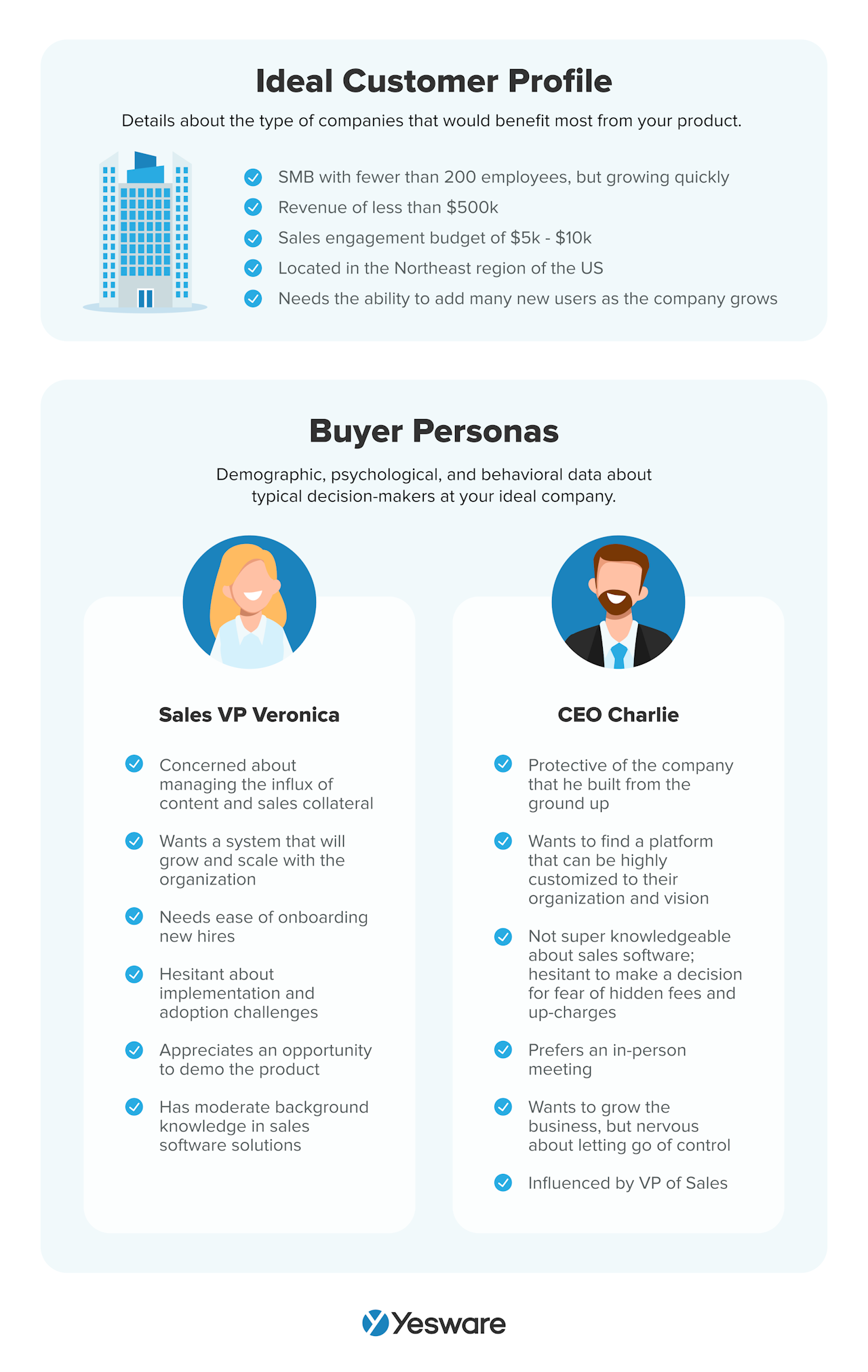 How to Identify Your Prospects’ Buying Motives
How to Identify Your Prospects’ Buying Motives
Buyers have varying levels of awareness around their buying motives. Motives that are apparent to buyers are called conscious motives. With these buying motives, the buyer is aware of what’s driving his or her decisions.
Some buyers, though, are less aware of their motives. These ambiguous or unknown motives are called dormant motives, and they represent needs that the buyer isn’t aware that they have until the seller helps them identify it.
In either case, there are specific things a sales rep can do to help uncover a prospect’s buying motives and tailor the buying process around them.
These are the three most important things a seller can do to identify a prospect’s motives: practice active listening skills, ask effective questions, and do thorough research on the prospect before and during the sales process.
Active Listening
Nothing can blur a buyer’s motives faster than a sales rep who won’t stop talking.
If you want to get a firm grasp on what’s motivating your prospect, listen more than you talk. And don’t just listen — actively listen.
Here are some of the best active listening skills: 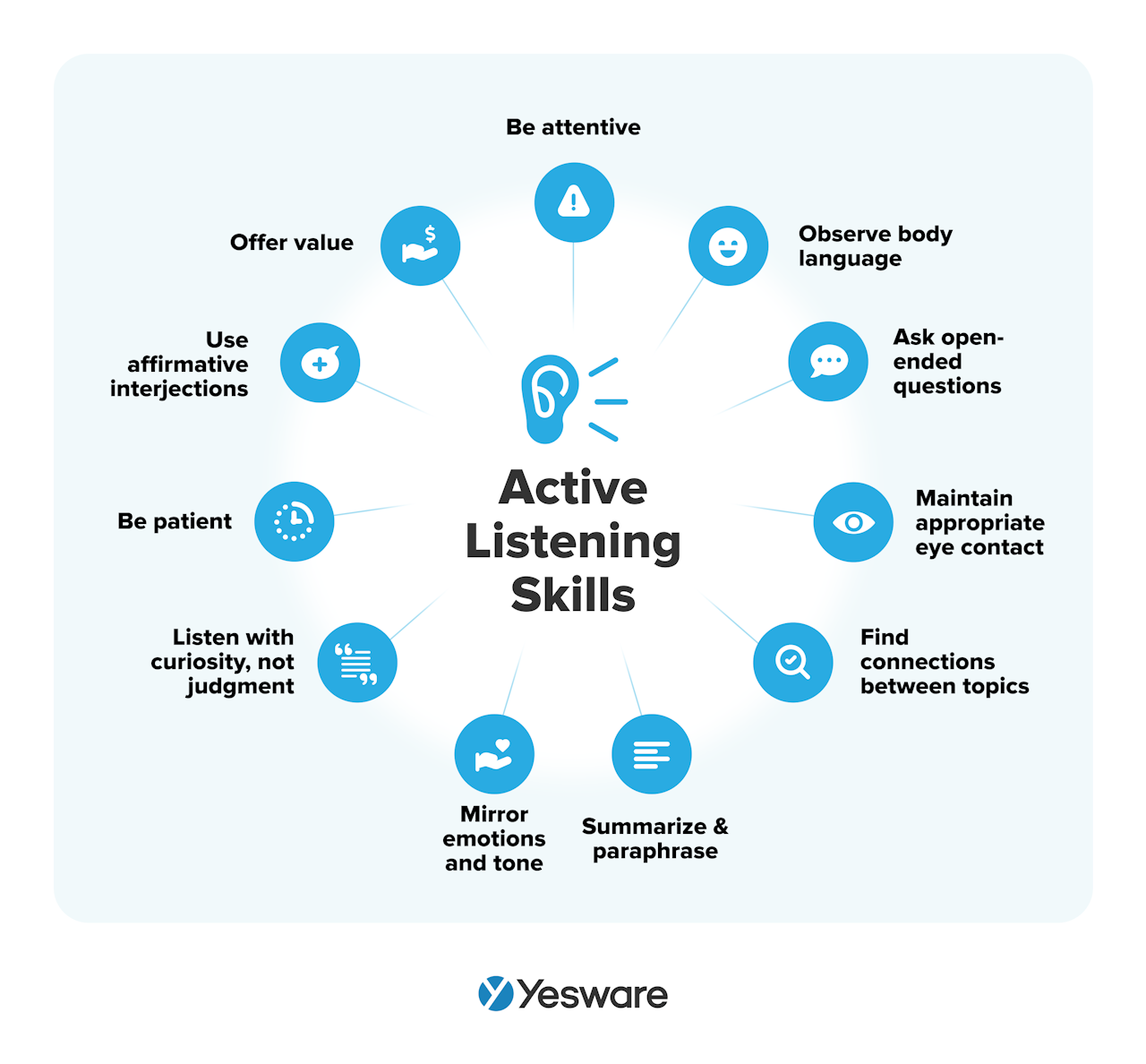 Most people do not listen as actively as they think. One study showed that, despite nearly all participants characterizing themselves as excellent listeners, only 25% managed to listen effectively.
Most people do not listen as actively as they think. One study showed that, despite nearly all participants characterizing themselves as excellent listeners, only 25% managed to listen effectively.
Sales reps need to be intentional and self-aware about how they’re internalizing the verbal and non-verbal cues a prospect shares.
Tip: Grab tips and best practices on verbal and non-verbal cues in the sales process below.
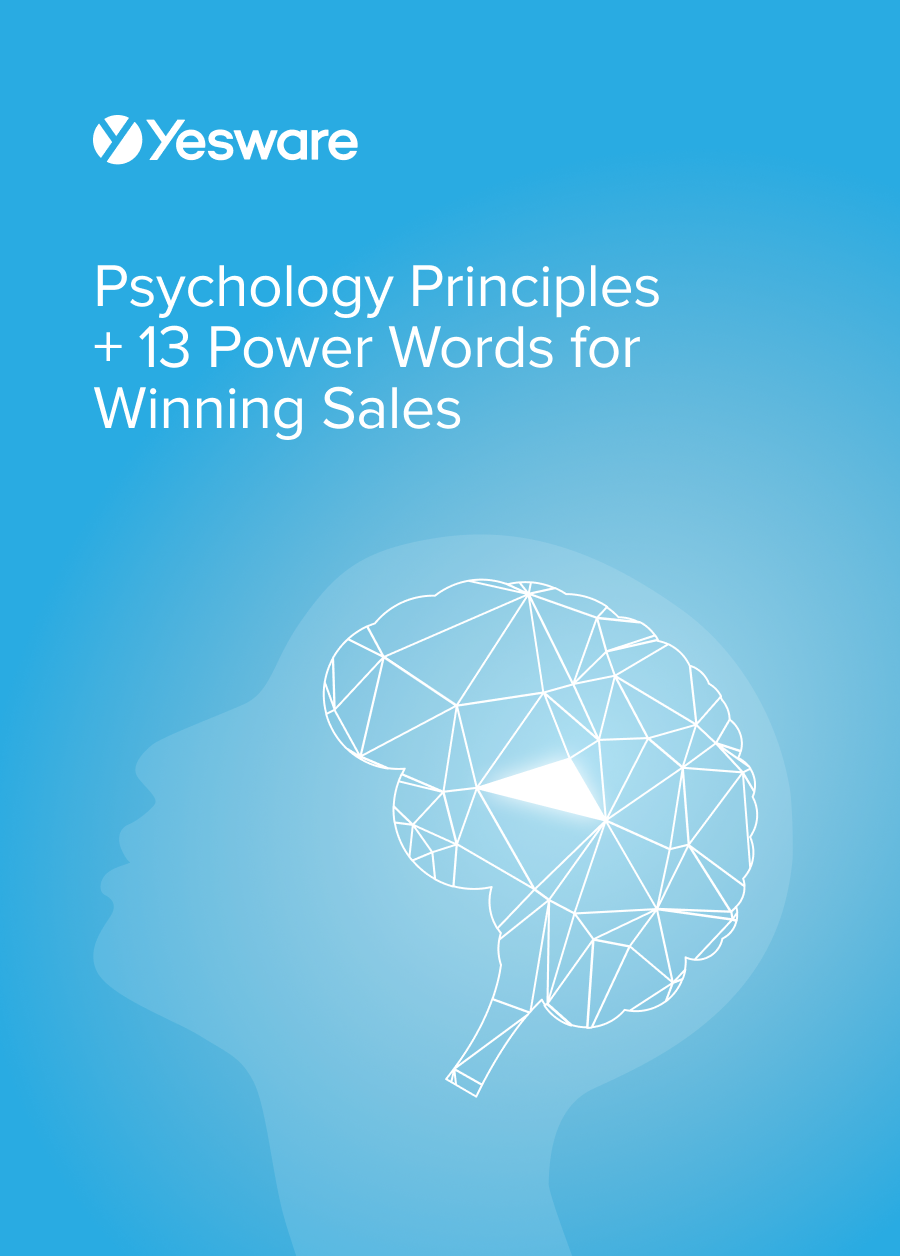 Psychology Principles + 13 Power Words for Winning SalesData-backed psychological principles, nonverbal cues, and persuasive phrases to win more deals.
Psychology Principles + 13 Power Words for Winning SalesData-backed psychological principles, nonverbal cues, and persuasive phrases to win more deals.
Ask the Right Questions
Identifying buyer motives starts with a seller’s ability to ask effective questions. They should be open-ended questions and encourage the prospect to dig deep for their responses.
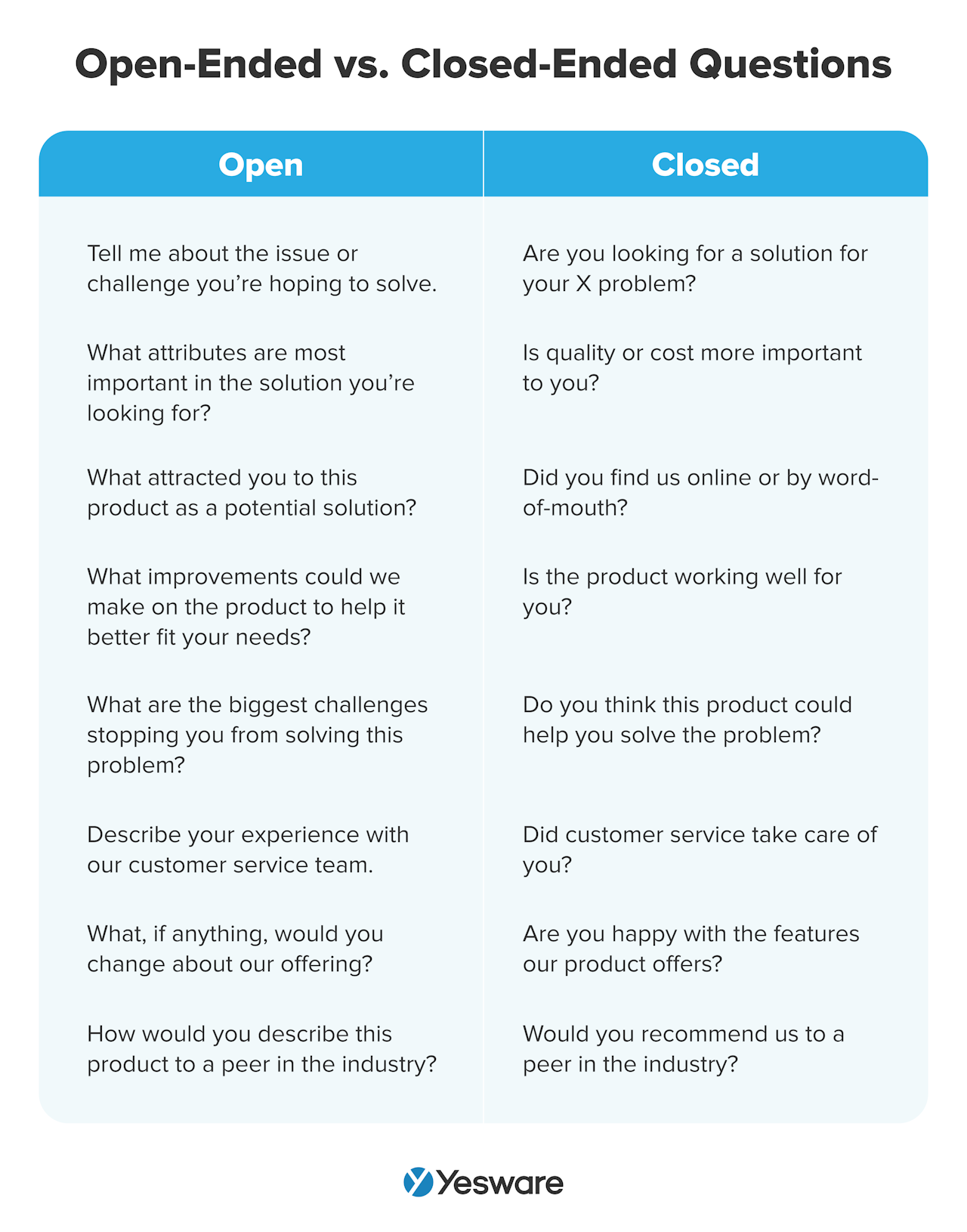 Sales reps should generate a list of relevant probing questions that can be easily adapted for specific buyers.
Sales reps should generate a list of relevant probing questions that can be easily adapted for specific buyers.
Research Your Prospects
Human behavior is relatively predictable, and buyers are no exception. A great deal about buyer motivators can be determined through careful research into the target market.
The more you learn about your buyer personas, the more complete your ICP and buyer persona profiles will be. The more complete these profiles, the readier sales reps will be to approach actual prospects in the real world.
Studying buyer motivation creates a self-fulfilling feedback loop that allows sellers to sell more and more effectively to their target market.
How to Leverage These Buying Motives in Your Sales Efforts
The ability to discover buyers’ motives can be a powerful tool for sales reps. The better a sales rep understands what motivates each prospect, the more they can personalize the sales process. And the importance of personalization cannot be understated.
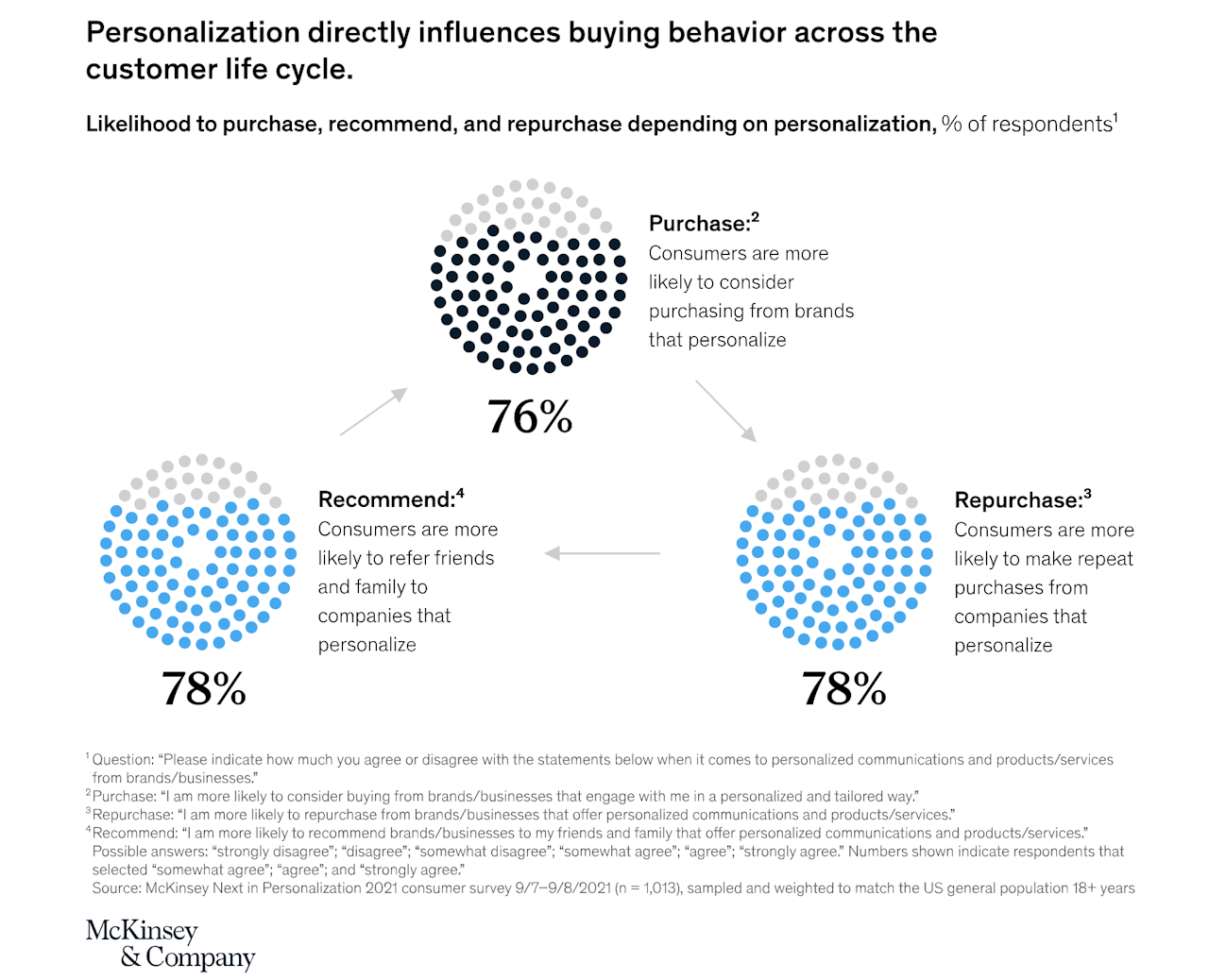
In fact, nearly all of a buyer’s main priorities in the sales process revolve around personalization and how well a sales rep is able to meet their unique needs.
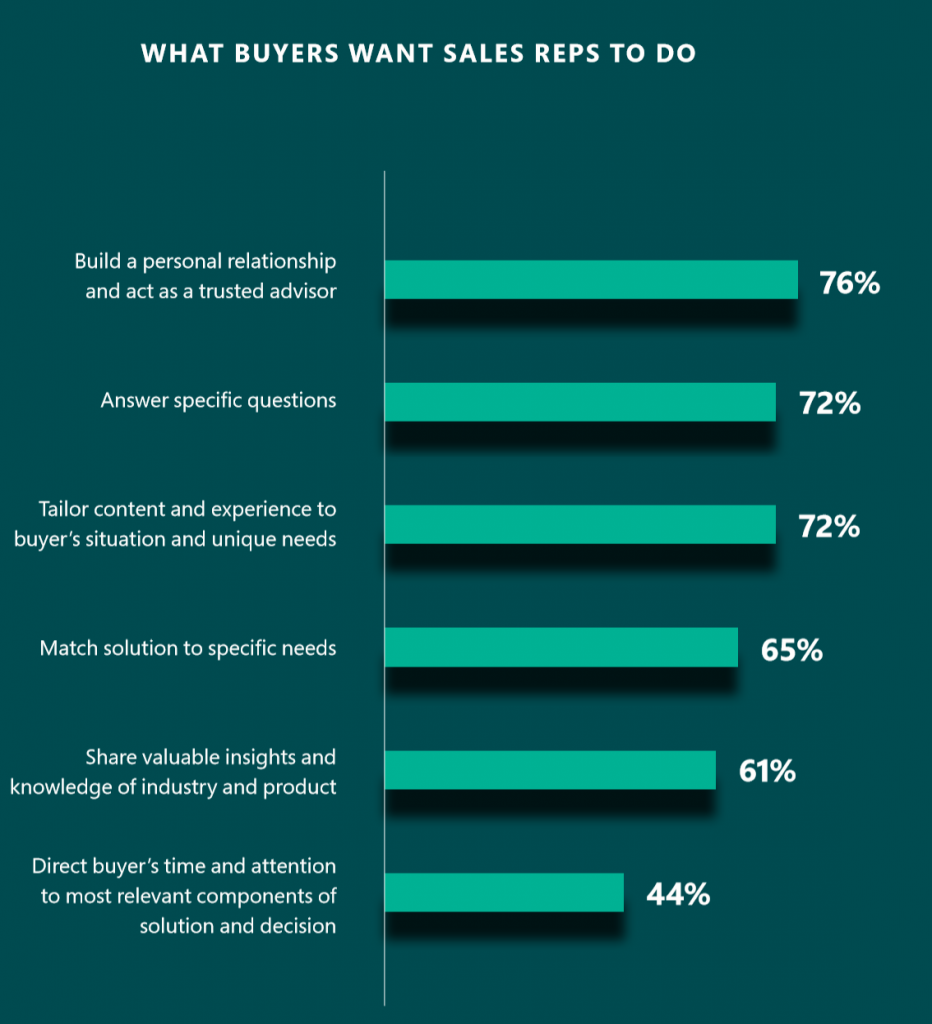
Understanding buying motives is one of the most important things a sales professional can do in their efforts to customize their offer.
Do you have a system for identifying buying motives? What are some of the most common ones in your industry? How do you appeal to them in the sales process?
Get sales tips and strategies delivered straight to your inbox.
Yesware will help you generate more sales right from your inbox. Try our Outlook add-on or Gmail Chrome extension for free, forever!
Related Articles
Casey O'Connor
Melissa Williams
Anya Vitko
Sales, deal management, and communication tips for your inbox

